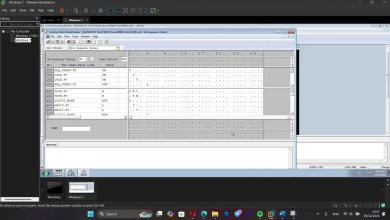VMWare, how to USB Booting Tutorial for VMware Player 17 | Step-by-Step Guide ,Operating System
Installing an operating system from a bootable USB in VMware involves a few straightforward steps. Here’s a guide to help you through the process:
### 1. **Prepare the Bootable USB**
– **Create Bootable USB**: Ensure your USB drive is properly prepared with the OS installation files. Tools like Rufus, UNetbootin, or the built-in `dd` command (for Linux) can be used to create a bootable USB drive from an ISO file.
### 2. **Set Up the VMware Virtual Machine**
1. **Open VMware Workstation or VMware Player**:
– Start VMware Workstation, VMware Player, or VMware Fusion, depending on your platform.
2. **Create a New Virtual Machine**:
– Select `Create a New Virtual Machine` or `New Virtual Machine` from the menu.
3. **Choose the Installation Method**:
– When prompted to select an installation media, choose `I will install the operating system later`. This step allows you to configure the VM before it starts the installation.
4. **Select the Guest Operating System**:
– Choose the operating system you plan to install from the list of available options.
5. **Configure VM Settings**:
– Adjust the virtual machine settings, such as the amount of RAM, number of processors, and disk space, according to the requirements of the operating system you’re installing.
### 3. **Attach the Bootable USB to the Virtual Machine**
1. **Connect the USB Drive to the Host Machine**:
– Make sure your bootable USB drive is connected to the host computer.
2. **Access VM Settings**:
– With your virtual machine powered off, go to the VM’s settings by selecting `Edit virtual machine settings` or a similar option.
3. **Add a USB Controller**:
– If not already present, add a USB controller to the VM:
– Click `Add` and select `USB Controller`.
– Follow the prompts to add the USB controller.
4. **Attach the USB Drive**:
– Go to the `Removable Devices` tab and ensure the USB drive is connected to the virtual machine. In some versions of VMware, you might need to select `USB Device` and then choose your USB drive from the list.
5. **Adjust Boot Order (if necessary)**:
– Go to the `Boot Options` or `BIOS` settings in the VM settings and ensure the USB drive is set to boot before the hard disk. In some cases, you might need to set this during the VM startup process.
### 4. **Boot from the USB Drive**
1. **Start the Virtual Machine**:
– Power on the virtual machine. If the USB drive is properly connected and recognized, the VM should boot from it.
2. **Enter BIOS/UEFI Setup (if needed)**:
– If the VM doesn’t boot from the USB drive automatically, you may need to enter the BIOS or UEFI settings. Usually, you can do this by pressing a key like `F2`, `F12`, `Esc`, or `Del` during the initial boot phase. From there, you can manually select the USB drive as the boot device.
### 5. **Install the Operating System**
– **Follow Installation Prompts**:
– Once the VM boots from the USB drive, follow the installation prompts for the operating system as you would on a physical machine.
– **Complete Installation**:
– Complete the OS installation process, including partitioning the virtual hard disk and setting up user accounts.
### 6. **Post-Installation**
– **Install VMware Tools**:
– After installing the operating system, it’s a good idea to install VMware Tools for better performance and integration. You can do this from the VM menu in VMware Workstation or Player.
By following these steps, you should be able to successfully install an operating system from a bootable USB drive in VMware. If you encounter any specific issues or error messages, feel free to ask for more detailed troubleshooting.
[ad_2]
source



